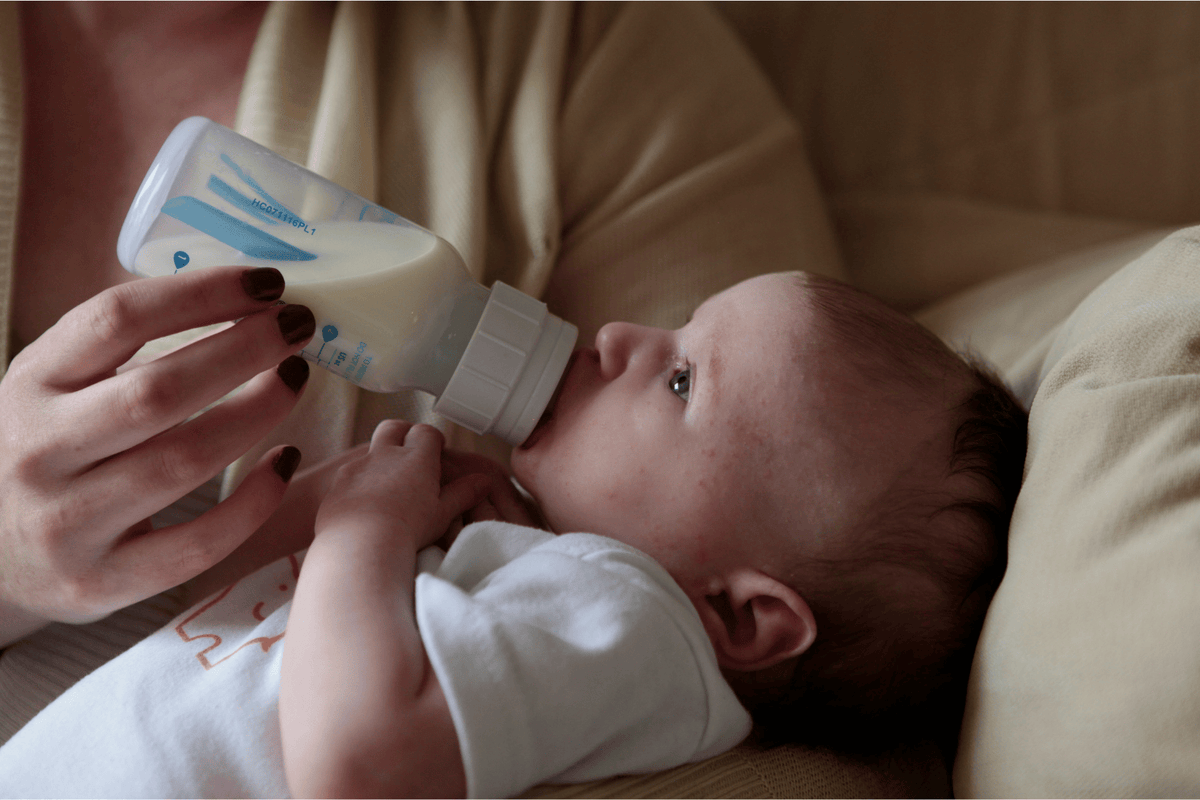
When Breast Milk Smells “Off”: Understanding High Lipase Milk (And What You Can Do About It)
|
4 min
|
4 min
If you’ve pumped milk, stored it, and later noticed a soapy or metallic smell... you’re not imagining things. Your milk hasn’t gone bad—but it has gone through something called lipase activity.
Let’s talk about what high lipase milk really is, why it happens, and how you can work with your milk—not against it—to keep your baby fed and happy.
Lipase is an enzyme that naturally occurs in breast milk. Its job? To break down fats into smaller components that are easier for your baby to digest. Think of it as built in digestive support for your milk.
But in some moms, lipase works a little too efficiently. During storage—particularly in the refrigerator or freezer—lipase can begin breaking down the fats in your milk more quickly, sometimes leading to a soapy or metallic smell . While this breakdown doesn’t affect the safety or nutritional value of the milk, it can change its smell and taste, which some babies may notice.
The combination of cooler temperatures and time allows lipase to do its job a little too well, which is why milk may smell or taste different after storage, even if it’s been handled properly (1).
Nope! Your milk is still nutrient-rich and completely safe for your baby.
The issue isn’t with safety—it’s with taste and smell , which can sometimes lead babies to refuse the milk after storage.
If your freshly pumped milk smells or tastes sweet and milky, but your refrigerated or frozen milk smells or tastes soapy, metallic, or sour , you may be dealing with high lipase.
💡 Pro tip: Try this test—
Pump a small amount of milk.
Store half in the fridge and the other half in the freezer.
Smell and taste both samples at intervals (e.g. 1 day, 3 days, 1 week).
Compare them to freshly expressed milk.
If the older samples have a stronger off-putting taste/smell, lipase could be the cause.
You may have read that scalding milk (heating it to just before boiling and then cooling it quickly) can deactivate lipase.
And while that’s true, it comes with drawbacks.
🔥 According to the Academy of Breastfeeding Medicine (ABM) , routine scalding is not recommended. Here's why:
Scalding destroys some of the live enzymes, immune factors, and nutrients in breast milk (1) .
It’s labor-intensive and introduces risk of overheating or contamination.
Most babies will eventually adjust to the taste of high-lipase milk, especially if it’s introduced early and consistently.
If your baby is turning up their nose at stored milk, here are some gentle, mom-tested strategies that may help:
Start with a ratio of 25% stored milk and 75% freshly expressed. Slowly increase the amount of stored milk over time. This can help your baby gradually adjust to the taste.
Many babies are more sensitive to taste when milk is warm. Offering milk chilled or slushy from the freezer can mask the smell and taste a bit.
Legendairy Milk’s Barrier Bags are specially designed to reduce oxidation and maintain milk’s freshness by providing an extra layer of protection. Unlike standard storage bags, they:
Limit exposure to light (which can speed up oxidation activity)
Help preserve flavor and aroma
Reduce odor contamination from other foods in the freezer
Keep milk sealed tightly for longer-term storage
💡 Fun Fact: In a small informal study comparing our bags to a leading competitor, 90% of moms said their milk tasted better with our Barrier Bags after 2 weeks in the freezer.
Introduce stored milk early on—within the first few weeks if possible—so your baby gets used to its flavor and scent before forming strong preferences.
If your baby is groggy or just waking from a nap, they may be more likely to take milk without noticing flavor differences.
Sometimes the soapy smell/taste develops in a matter of hours, but many women find that they have 24 hours or more before the milk fats break down enough to alter the taste. Consider feeding your baby this milk right away or freezing it as soon as possible to slow down the process.
Adding a drop or two of high quality, alcohol free vanilla extract to your milk can help mask the taste.
Consider donating your frozen milk to a milk bank. Lipase and other taste issues are not typically a concern for milk banks.
Not at all! Lipase levels are biologically determined. It’s just the way your body makes milk.
There’s no foolproof way to reduce the amount of lipase your body produces—and honestly, you don’t need to. However a few lactation consultants have shared their theories on a gluten/lipase connection. Systemic inflammation and gluten sensitivity being the culprit for some women with high lipase (4).
Nope. The issue is sensory—not digestive. In fact, lipase is helpful in breaking down fats for your baby.
Unless the milk has been stored improperly (like left out too long), a strange smell alone isn’t a reason to toss it. When in doubt, try mixing or offering cold before tossing it.
This protocol provides guidelines on the storage of human milk, including recommendations against routine scalding due to potential nutrient loss.
KellyMom: My expressed breastmilk doesn't smell fresh. What can I do?
This article discusses high lipase activity, its effects on breast milk odor and taste, and offers strategies for managing it, including scalding.
https://kellymom.com/bf/pumpingmoms/milkstorage/lipase-expressedmilk/
La Leche League International: Smell of Stored Human Milk
This resource explores changes in the smell of stored human milk, the role of lipase, and considerations regarding scalding.
https://llli.org/breastfeeding-info/smell-human-milk/
Centers for Disease Control and Prevention: Proper Storage and Preparation of Breast Milk
This guide provides comprehensive information on the storage and handling of breast milk to maintain its safety and quality.
https://www.cdc.gov/breastfeeding/pdf/preparation-of-breast-milk_h.pdf